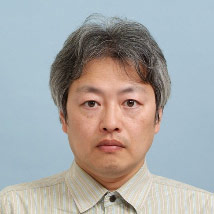Development and deployment of robotic services for social environment need standardization activities since such services require adaptive and agile configurability. Component oriented technology for robotic functional modules and APIs for such functions are being standardized for a decade. In IEEE, Robotics and Automation Society (RAS) stands for such standardization. Object Management Group (OMG) fosters Robotics DTF (domain taskforce) for this target domain. In ISO, TC299 (robotics) has replaced TC184/SC2 (automation systems and integration / robots and robotic devices), in which WG6 is dedicated for “modularity for service robots.”
Robotic services are often developed using multiple robots and sensors in the service environment those are connected via network. They are therefore called networked robots. A standard about abstract architecture of networked robot is published as ITU-T Recommendation Y.4106 (renumbered from F.747.3) defines requirements and functional model for a ubiquitous network robot platform that supports ubiquitous sensor network applications and services. To develop such services, underlying technologies are standardized as follows.
Recently robotic functions become developed on cloud facilities so that they are also called cloud robotics. In such deployment model, to connect robotic functional modules loosely, common component models are required. OMG has published a standard named Robotic Technology Component (RTC) 1.1 in 2011. RTC defines such a component model of robotic functional modules independent from the network communication layer, as an implementation of RTC, RT-Middleware adopts CORBA (Common Object Request Broker Architecture) as its communication platform. ROS (Robot Operating System) is another de facto standard commonly used to develop robot modules. Though ROS itself is not standardized, the next version ROS2 adopts DDS (Data Distribution Service) and DDS-RPC defined by OMG as underlying communication standards.
Representation of data and functions are another target of standardization. OMG RLS (Robotic Localization Service) 1.1 extends representation of coordinate system and position defined in GIS (Geographic Information System) domain to support information used in robotics field such as heading orientation or pose information of physical entities, error estimation and time of measurement. OMG RoIS (Robotic Interaction Service) Framework 1.1 defines representation of component profiles that describe programming interface of robotic functional components and actual definition of 15 basic components to be used in HRI (Human Robot Interaction) domain. IEEE RAS also published two standards, IEEE 1872-2015 Ontologies for Robotics and Automation and IEEE 1873-2015 Standard for Robot Map Data Representation for Navigation. The former defines core ontology for robotics and automation (called CORA) that gives formal representation and reasoning in robots, then being extended to industrial robot and autonomous robotics. The latter provides a common representation and encoding for the map data used for navigation by mobile robots. In ISO, TC299 WG6 works on modularity for service robots to cover both software modularity and hardware modularity with safety aspects. Ontologies for service robots and communication infrastructure for service robots including both messaging and wireless networking will be next issues to be standardized in those organizations.
Those standards are, as a case study, used in an implementation of autonomous mobility system in social environments as follows. Assume a shopping mall as a service environment and numbers of mobile service robots such as navigation robots, carrier assistance robots and wheelchair robots are moving in coordination with pedestrians and providing services offered by the mall, shops in the mall and other information providers. Service providers will hire suitable robots for their target customers to provide service and those robots work for the customer. A common platform is required to manage robotic resources and to establish connection between services and robots. In the case, an implementation of ITU-T Y.4106, named “UNR Platform,” is used as a base platform and OMG RoIS is used to define/call components APIs. The functions of those components and side effects in the social environment regarding ethical, legal, social issues (ELSI) in robotics are to be described for reasoning in service execution but not yet standardized; they are to be discussed as a part of robotic service ontology. Integration of messaging (RoIS, CORBA, DDS) layer and mobile networking layer (Wi-Fi, LTE, 5G) are also addressed in the project.
 KOJI KAMEI (kamei@atr.jp) is the group leader of Cloud Intelligence Research Group at ATR Intelligent Robotics and Communication Laboratories in Kyoto, Japan. He is also working as a co-chair of Robotic His research interests focus on ambient intelligence technologies that support information sharing and interaction among people within social activities in real world environments. He joined ATR in 2009 and then has been involved in research of networked robotic services and standardization of platform technologies for them.
KOJI KAMEI (kamei@atr.jp) is the group leader of Cloud Intelligence Research Group at ATR Intelligent Robotics and Communication Laboratories in Kyoto, Japan. He is also working as a co-chair of Robotic His research interests focus on ambient intelligence technologies that support information sharing and interaction among people within social activities in real world environments. He joined ATR in 2009 and then has been involved in research of networked robotic services and standardization of platform technologies for them.
